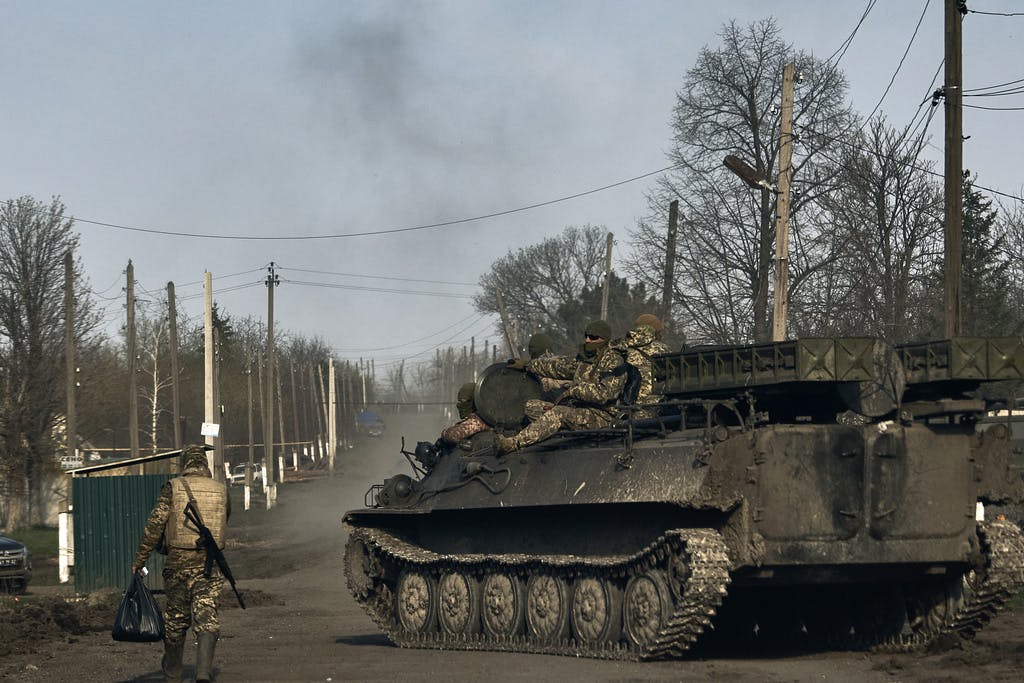Leak of Ukraine War Documents Is Bad, but Operational Impact Is Likely Limited
What happens next on the front lines is partly foreshadowed by some very public leaks.

The major leak of intelligence documents that came to light last week had some of America’s allies squirming at the start of this one, Ukraine chief among them — but, blurry optics for the Biden administration notwithstanding, the operational impact of the leaks will likely be limited.
As the Pentagon investigates just how so many top-secret documents were spilled onto the internet and by whom, reports emerged Monday that Ukraine is already modifying plans for a major counter-offensive against Russia that could come as soon as this month. Yet an adviser to President Zelensky, Mykhailo Podolyak, evoked a need for changes of a tactical rather than a strategic nature.
“There are strategic tasks — they are unchangeable,” Mr. Podolyak told Reuters, adding that “operational and tactical scenarios are constantly refined, based on an assessment of the situation on the battlefield, resource provision, intelligence data on the enemy’s resources, etc.”
Yet while Washington wrestles with what is fast shaping up to be the agency gaffe of the year, for Ukraine the chief problem is what Mr Podolyak implies it is: the big picture, and one that is not altogether rosy. More than a year has passed since Vladimir Putin launched a full-scale invasion of Ukraine, and Russian forces, though ejected from Ukraine’s north, are tightening their grip both at Bakhmut and on the northern periphery of Russian-occupied Crimea. These occurrences are far from secret.
What happens next and, almost as importantly, what does not happen, is partly foreshadowed by some of the by now very public leaks. Some of those pertain to Ukraine’s air defenses, which according to a previously secret document dated February 23 are likely at the current usage rate to be quickly depleted. As the New York Times first reported, Ukraine will need an influx of munitions to stop Russia’s air force from controlling the course of the war because the country’s stocks of Soviet-era S-300 and Buk air defense missiles will completely run out between mid-April and early May.
As for the authenticity of that and other photographed documents, the Pentagon has said that they “appear to contain sensitive and highly classified material.”
The missiles that have been striking Ukraine can theoretically be shot down by anti-aircraft systems, but to take them all down would not only rapidly deplete stocks but also leave the skies virtually defenseless to more Russian cruise missiles, fighter jets, and attack helicopters.
A spokesman for Ukraine’s air force, Yuriy Ignat, told Ukrinform that a missile launched from high altitude “can be shot down, but if we calculate how many missiles would be needed — because it takes more than one missile to hit a bomb, which is not that easy — then we run the risk of simply running out of sufficient weapons to counter the forces of the Russian Federation which are already inside the country.”
Such a reality makes it the chief remit of Ukraine’s air force, according to Mr. Ignat, to prevent Russian planes and helicopters from appearing in the Ukrainian skies in the first place. Here, though, is where a kind of invisible wall emerges. Some strikes on military targets within Russian territory have already occurred and have been largely attributed to Ukraine. Yet among the 50 pages of leaked documents is a summary from the CIA’s World Intelligence Review, according to which Beijing is likely to perceive such attacks by Ukraine as “an opportunity to cast NATO as the aggressor.”
The summary concludes that if Communist China were to believe that “Washington was directly responsible for escalating the conflict,” it could give Beijing the impetus to arm Russia. It is that risk, and the attendant prospect of a truly dangerous escalation, which is preventing Washington from supplying Ukraine with the kinds of longer range weapons which it seeks to use against Russian forces.
This puts President Zelensky between something of a rock and a hard place. As if to underscore it, that once highly anticipated phone call from President Xi to Kyiv never came. Count on Kyiv, though, to find some creative solutions even as some hackles continue to be raised by the leak fiasco.
The mess extends to Washington’s relationship with NATO member Turkey, which according to other leaked documents may be on the brink of selling weapons to Russia’s private Wagner mercenary group through a third party: Mali, where a number of Wagner forces operate. These are the same ruthless fighters currently laying waste to much of eastern Ukraine.
As poorly as many of the leaks reflect on the Biden administration and despite the Ukrainian vulnerabilities they have exposed, others do point to a seamless level of cooperation between American and Ukrainian intelligence on numerous fronts. That will continue.
Yet there is no getting around the fact that Europe is on edge. Once Mr. Biden completes his Irish odyssey, he might find it prudent to start doing things like taking Turkey to task over its sundry connivances with Moscow. He will assuredly return to a White House that is badly in need of a round of spring cleaning.

